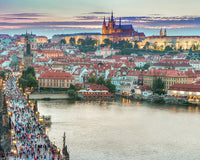Normandy has always captivated travelers with its rich history, diverse landscapes, and world-famous cuisine. Bordered by the English Channel, it offers a unique mix of wild beaches, dramatic cliffs, historic towns, and charming villages. Whether you are a culture lover, a nature enthusiast, or a foodie, Normandy has something for everyone, whether for a short getaway or a longer road trip.
Want to explore this beautiful French region? In this guide, we share what to see in Normandy and which activities to prioritize during your stay.
The Must-See Places in Normandy
Normandy is full of world-renowned sites that attract millions of visitors every year.

Mont-Saint-Michel: An Unmissable Wonder
It is impossible to talk about Normandy without mentioning Mont-Saint-Michel. Listed as a UNESCO World Heritage Site, this medieval masterpiece perched on a rocky island in a spectacular bay attracts more than 2.5 million visitors annually.
Your visit starts with a walk through the narrow cobblestone streets lined with old houses, leading up to the abbey, a stunning example of Gothic architecture. The more adventurous can even explore the bay at low tide with a guide to see the Mont from a different perspective. Be cautious though, as the tides here are among the highest in Europe. It is also one of the most beautiful places to watch a sunset.
The D-Day Beaches and Their Historic Legacy
Normandy is deeply marked by the events of World War II. The D-Day landing beaches are an essential stop to understand this major part of world history. Omaha Beach, Utah Beach, Gold Beach, Juno Beach, and Sword Beach combine emotion and remembrance.
The Caen Memorial Museum and the American Cemetery in Colleville-sur-Mer offer a deeper understanding of the events of June 6, 1944. For history lovers, spending a full day in this area is an unforgettable experience.
The Cliffs of Étretat
Famous around the world, the cliffs of Étretat impress visitors with their natural white chalk arches and wild beauty. These dramatic formations plunging into the sea have inspired many artists, including Claude Monet.
A walk along the coastal paths offers breathtaking views, especially at sunset. Étretat is more than a natural wonder. Its picturesque village, art galleries, and seafood restaurants make it a complete destination.
Cities to Discover in Normandy
Beyond the iconic sites, Normandy is home to cities full of charm, history, and culture.

Rouen, the City of a Hundred Steeples
As the historic capital of Normandy, Rouen is rich in heritage. Its magnificent cathedral, famously painted by Monet, dominates a medieval city center filled with half-timbered houses.
Stroll through its narrow streets to reach the Place du Vieux-Marché, where Joan of Arc was burned at the stake in 1431. Rouen is also a lively cultural city, with excellent museums and frequent events.
Honfleur, the Artists’ Harbor
A true gem at the mouth of the Seine, Honfleur instantly charms visitors with its Old Harbor surrounded by tall, colorful houses. The town inspired many Impressionist painters, including Boudin and Monet.
Today, art galleries and workshops are everywhere. Be sure to stroll along the port, visit the wooden Sainte-Catherine Church, and enjoy seafood in one of the local restaurants.
Deauville and Trouville, the Elegant Sisters
With their long beaches lined with colorful bathing cabins, Deauville and Trouville represent the sophistication of the Côte Fleurie. Deauville has long attracted celebrities and luxury lovers with its casino, racecourse, and American Film Festival.
Just across the bridge, Trouville has a more relaxed atmosphere, with its lively fish market and charming streets. Both towns can easily be visited in the same day.
Normandy’s Countryside and Villages
Normandy is not only about the sea. Its countryside is just as captivating.

The Pays d’Auge and Its Typical Villages
The Pays d’Auge region perfectly represents the charm of Normandy. Flower-filled villages, half-timbered houses, apple orchards, and horse farms create a postcard-perfect landscape.
Among the most beautiful villages is Beuvron-en-Auge, officially listed among the “Most Beautiful Villages in France.” Walking through these towns is also a great opportunity to taste local specialties such as Camembert and Livarot cheese, as well as cider and Calvados.
The Gardens of Giverny
World-famous, Claude Monet’s gardens in Giverny attract visitors from around the globe. The Impressionist painter found endless inspiration here, especially in his iconic water lily pond.
Monet’s house, preserved as it was during his lifetime, completes the visit. Although Giverny is technically closer to the Île-de-France region, it is considered a Norman treasure and well worth a visit.
Experiences Not to Miss in Normandy
Exploring Normandy also means living unique experiences that combine nature, culture, and gastronomy.
Local Markets and Gastronomy
No trip to Normandy is complete without tasting its delicious cuisine. The region is famous for its cheeses (Camembert, Pont-l’Évêque, Livarot), its rich butter and cream, and its seafood such as oysters from Cancale Bay, scallops from Dieppe, and mussels from Barfleur.
Local markets are the best way to discover these products. The Dieppe market, voted the most beautiful market in France in 2020, is a perfect example.
Hiking and Outdoor Adventures
With its rugged coastline, green valleys, and forests, Normandy is a paradise for hikers. The GR 223 coastal path, also known as the “Customs Trail,” offers spectacular views, especially around the Cotentin Peninsula and Étretat. Inland, scenic routes wind through the Norman countryside and apple orchards.
Wellness and Thalassotherapy
Normandy is also known for its seaside resorts that offer thalassotherapy treatments. Towns such as Cabourg, Granville, and Ouistreham have wellness centers where you can relax by the sea. It is a perfect way to enjoy Normandy’s coastline while taking care of yourself.
Practical Tips for Planning Your Trip to Normandy
Normandy is only about two hours from Paris, which makes it very easy to reach.
- By train: Frequent connections serve Rouen, Caen, Le Havre, and Deauville.
- By car: The most flexible way to explore the countryside and small villages.
- By bike: Several parts of the coast and countryside are bike-friendly, especially along the Vélomaritime route.
Budget-wise, expect to pay €15–25 for a meal in a local brasserie and €80–150 per night in a charming hotel, depending on the season.
Conclusion: A Region Full of Diversity
Normandy is a destination that enchants visitors with its diversity. From iconic landmarks like Mont-Saint-Michel to historic cities such as Rouen and Honfleur, from the charming villages of the Pays d’Auge to delicious local food and coastal walks, everyone can find their ideal Norman experience.
Whether you come for a long weekend or a week-long trip, the region offers a unique mix of culture, scenery, and flavors. And even if you think you already know Normandy, you will probably discover new hidden gems waiting to surprise you.
FAQ: Visiting Normandy
What is the most beautiful city in Normandy?
Each city has its own charm. Honfleur is often considered the most beautiful, with its picturesque harbor and colorful houses. Rouen appeals to history lovers, while Deauville attracts those who enjoy luxury and elegance.
How many days do you need to visit Normandy?
A weekend of 2 or 3 days is enough to see highlights like Rouen, Honfleur, and Étretat. To include Mont-Saint-Michel, the D-Day beaches, and the Pays d’Auge, plan at least 5 to 7 days.
What is the best time to visit Normandy?
Normandy can be visited all year round. Spring and summer are perfect for beaches and gardens. Autumn offers beautiful colors in the countryside and fewer tourists. In winter, seaside resorts offer wellness and spa stays.
Which local dishes should you try?
Do not miss:
- Camembert de Normandie AOP
- Fresh oysters and scallops
- Mussels from Barfleur
- The local version of Black Forest cake
- And of course, a glass of cider or Calvados
Can you visit Normandy without a car?
Yes, but it requires some planning. Major cities like Caen, Rouen, Le Havre, and Deauville are accessible by train from Paris. Regional buses connect some villages, but to explore the countryside and beaches freely, a car is best.
What are the must-see places in Normandy?
The main highlights are Mont-Saint-Michel, the cliffs of Étretat, the D-Day beaches, Honfleur, Rouen, the villages of the Pays d’Auge, and Monet’s gardens in Giverny. These places perfectly reflect the region’s historical, cultural, and natural richness.











